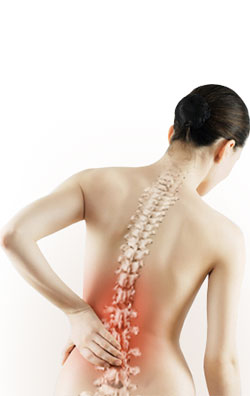
Osteoporosis is a disease in which the density of the bone decreases and bone becomes more porous and fragile which makes it more susceptible to fractures.
Bones are composed of 99% of calcium in our body. However calcium is also necessary for other body functions, like contraction of blood vessels activity of muscles etc.
When the blood calcium level goes down, a normal process called resorption begins. Resorption is a process of stealing calcium from the blood to normalize the calcium level in the blood. This stealing process is carried out by bone breaking cells called osteoclasts.
Body by default has a capacity to compliment the lost calcium from the bone and this process is called bone formation. The building process is carried out by osteoblasts otherwise called as bone building cells.
What happens in osteoporosis?
Here the activity of bone building cells slows down and the activity of the bone breaking cells continue with their work. This leads the reduction in Bone mineral density. As result of these bones becomes too weak to carry the load and increasing the risk of fracture.
The most common of the disease is primary osteoporosis. There are two type of primary osteoporosis type –I and type-II. Primary osteoporosis is a result of normal bodily changes, for example: at the time of menopause in woman. Other form is secondary osteoporosis.
Primary Type –I osteoporosis: occurs in women in several years prior to falling in menopause. During this time, change in oestrogen level in the blood contributes to osteoporosis.
Primary Type –II osteoporosis: is as a result of cumulative effect of normal ageing process. This gradual loss of bone density dose not normally shows up until the age of 75 yrs.
Secondary osteoporosis usually happens due to some other external causes like prescription medication or medical conditions.
Medical condition such as Anorexia, alcoholism, diabetes, thyroid disorder etc can lead to osteoporosis.
Prescription drugs includes, corticosteroids, thyroid hormones, chemotherapy, etc can also increase the risk of osteoporosis.
Although osteoporosis can be caused due to many factors, the result is always the same. The bone mineral density decreases and makes the bone weak and brittle. This weak and brittle bone is prone to fractures even in mild stress like in bending, lifting or coughing. The fracture most commonly occurs in spine, hip and wrist.
Though women are at greater risk, men are also prone to have osteoporosis.
Factors influencing bone growth and calcification of the bone
1)Sex hormone
2)Dietary intake of nutrients like, calcium, protein, vitamin-A, D, k, phosphorous, Magnesium, zinc and copper also influence the growth of the bone, deficiency of the same can lead to osteoporosis.
3)Genetics also have influence on bone density.
4)Life style: the more stress you give to the bones, the stronger and denser it would become.
Strategies for preventing osteoporosis
Strategies for preventing osteoporosis are different for young women and older women.
Young women should ensure
1) To meet their regular need of calcium, vitamin-D and other nutrients
2) Physical activity of weight bearing nature is also important to maintain strong and denser bone.
In postmenopausal women
1) Certain medical treatment will be essential to keep their hormone in proper level.
2) Calcium supplement can also be included in the strategy list.
3) Regular weight bearing and resistance activities are also important strategy for older people.
For men similar prevention strategies can be applied .
Finally smoking and alcohol consumption can have very bad effect on bone growth, avoid these for a healthier bone.
In summary, osteoporosis is the awakening of bone due to loss of calcium and phosphorous from the interior of the bone architecture, is a degenerative disease that is influenced by many contributing factors. Health promoting activities such as adequate nutrition and physical activities, proper medication coupled with avoidance of smoking and alcohol consumption can forestall the onset and severity of the osteoporosis.





